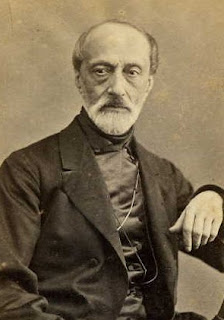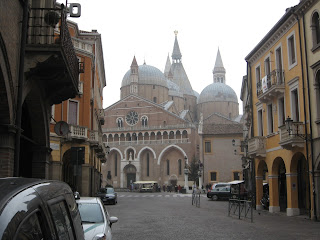When students and citizens joined forces against their oppressors
 |
| The Caffè Pedrocchi in Padua witnessed fighting in the 1848 uprising against the Austrians |
A street is now named Via VIII Febbraio to commemorate the location of the struggle between the Austrian soldiers and the students and citizens of Padua, when both the University of Padua and the Caffè Pedrocchi briefly became battlegrounds.
The Padua rebellion was one of a series of revolts in Italy during 1848, which had started with the Sicilian uprising in January of that year.
The Austrians were seen as arrogant and aggressive by ordinary citizens and the ideas of Giuseppe Mazzini and Camillo Benso Cavour about a united Italy were becoming popular with progressive thinkers.
 |
| Many students supported the ideas of the revolutionary Giuseppe Mazzini |
Students and professors at Padua University had been meeting in rooms at the University and in Caffè Pedrocchi to discuss their discontent.
The uprising began with the storming of a prison and prisoners being set free. Then many ordinary citizens came to fight alongside the students against the armed Austrians, who clubbed the Paduans with their guns as well as firing at them.
You can still see a hole in the wall of the White Room inside Caffè Pedrocchi made by a bullet fired by an Austro-Hungarian soldier at the students.
Both Paduans and Austrian soldiers were killed and wounded in the fighting. Many people were arrested by the soldiers and in a crackdown later, some students and professors were expelled from the university.
The revolt was short lived and there was no other rebellion in Padua against the Austrians. But the 8 February uprising was thought to have encouraged Charles Albert of Savoy, King of Sardinia-Piedmont, to later declare war on Austria.
In 1866 Italy finally expelled the Austrians from the Veneto and Padua became annexed to the Kingdom of Italy.
Travel tip:
Right in the centre of Padua, the Caffè Pedrocchi has been a meeting place for business people, students, intellectuals and writers for nearly 200 years. Founded by coffee maker Antonio Pedrocchi in 1831, the café was designed in neoclassical style and each side is edged with Corinthian columns. It quickly became a centre for the Risorgimento movement and was popular with students and artists because of its location close to Palazzo del Bò, the main university building. It became known as 'the café without doors', as it was open day and night for people to talk, read, play cards and debate. Caffè Pedrocchi is now a Padua institution and a 'must see' sight for visitors. You can enjoy coffee, drinks and snacks all day in the elegant surroundings.
 |
| The Basilica di Sant'Antonio in Padua |
The University of Padua was established in 1222 and is one of the oldest in the world, second in Italy only to the University of Bologna . The main university building, Palazzo del Bò in Via VIII Febbraio in the centre of Padua, used to house the medical faculty. You can take a guided tour to see the lectern used by Galileo when he taught at the university between 1592 and 1610. Other sights that are a must-see on a visit to Padua include the 13th century Basilica di Sant'Antonio.
More reading:
Giuseppe Mazzini - hero of the Risorgimento
Sicilian revolt that sparked a year of uprisings
The Five Days of Milan
Also on this day:
1591: The birth of Baroque master Guercino
1751: The death of Trevi Fountain architect Nicola Salvi
Home




